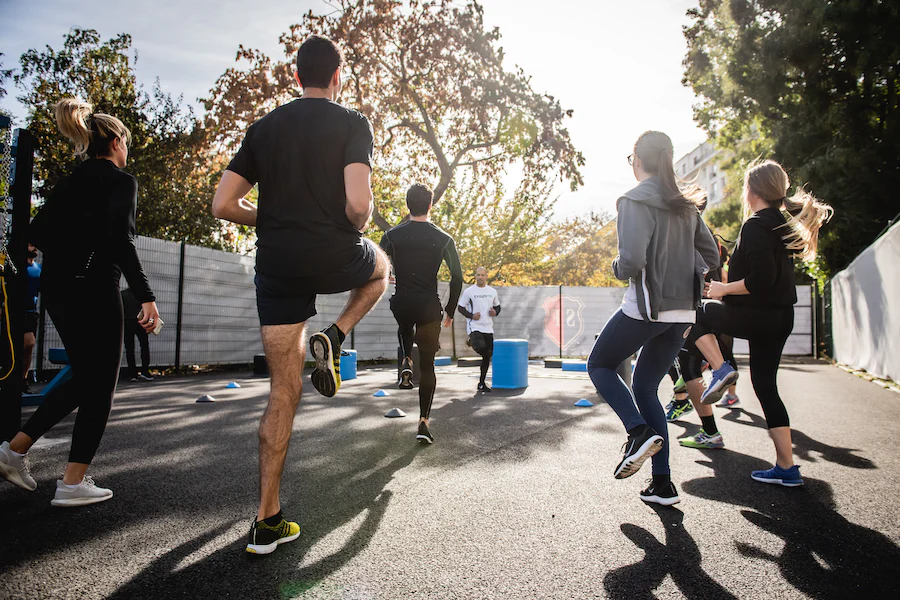Interval walking training (IWT) is a unique exercise regimen that has gained attention for its potential health benefits, particularly in improving metabolic function, physical fitness, and muscle strength. Developed by the Department of Sports Medical Sciences at Shinshu University Graduate School of Medicine in 1999, IWT involves alternating between fast walking at a high intensity (≥ 70% of individual peak aerobic capacity) and slow walking at a low intensity (≤ 40% peak aerobic capacity) for three minutes each. The recommended weekly exercise duration is 60 minutes of fast walking time, which translates to 5-10 sets of 3 minutes of fast walking and 3 minutes of slow walking per day for at least 4 days.
Benefits of IWT
- Improved Metabolic Function: IWT has been shown to enhance metabolic function in individuals with type 2 diabetes, with one pilot study suggesting that it could have a positive effect on lipid metabolism.
- Physical Fitness: IWT has been found to improve physical fitness in individuals with type 2 diabetes, as evidenced by a study that compared interval training with continuous walking training (CWT) and found that IWT improved physical fitness, body composition, and glycemic control.
- Muscle Strength: The combination of high-intensity and low-intensity walking in IWT has been linked to increased muscle strength, which can contribute to improved insulin resistance and more effective glycemic control.
- Versatility: IWT can be adapted to various fitness levels and can be performed in a free-living setting, making it a versatile exercise option for individuals with diverse health needs and lifestyles.

Steps for Interval Walking Training (IWT)
- Warm-up: Begin with a 5-10 minute light warm-up, such as gentle walking or dynamic stretching, to prepare your body for the workout.
- Foot and Leg Positioning:
- Stand with your feet shoulder-width apart, distributing your weight evenly between the balls of your feet and your heels.
- Engage your core muscles to maintain a neutral spine position, avoiding excessive arching or rounding of the back.
- Keep your knees slightly bent, not locked, to maintain a stable base of support.
- Interval Walking Sequence:
- Begin with a 3-minute bout of fast walking at an intensity of 70% or more of your individual peak aerobic capacity.
- Immediately transition to a 3-minute bout of slow walking at an intensity of 40% or less of your peak aerobic capacity.
- Repeat this fast-slow interval sequence for a total of 5-10 sets, depending on your fitness level and the recommended weekly duration of 60 minutes of fast walking time.
- Heel-to-Toe Positioning:
- As you walk, focus on maintaining a heel-to-toe gait pattern, where you strike the ground first with your heel and then roll through to push off with your toes.
- Avoid a flat-footed or toe-striking gait, as this can place unnecessary stress on your joints.
- Maintain a natural, relaxed arm swing to complement the walking motion.
- Posture Cues:
- Keep your head up, eyes forward, and chin tucked slightly in to maintain a neutral neck position.
- Engage your core muscles to support your spine and maintain good upright posture.
- Avoid hunching your shoulders or leaning forward, as this can compromise your balance and efficiency.
- Cool-down and Stretching:
- After the interval walking session, perform a 5-10 minute cool-down of light walking or gentle stretching to help your body recover.
- Focus on stretching the major muscle groups used during the workout, such as your calves, quadriceps, and hamstrings.
Remember to start at a pace and intensity that is comfortable for your current fitness level, and gradually increase the duration and intensity of your IWT sessions over time as you build endurance and strength.

Real-World Evidence
A study published in the journal Diabetologia found that interval training improved glucose effectiveness in individuals with type 2 diabetes, challenging conventional views on the mechanisms behind training-induced improvements in glycemic control. Another study by the same authors showed that IWT more favourably improves glycemic control in people with type 2 diabetes when compared to CWT matched to have the same overall energy expenditure.
Conclusion
Interval walking training offers a unique and effective approach to improving metabolic function, physical fitness, and muscle strength. With its versatility and potential to enhance glycemic control in individuals with type 2 diabetes, IWT has gained worldwide attention and is increasingly recognized as a valuable tool for promoting overall health and well-being. As more research is conducted, we can expect to gain a better understanding of the long-term benefits and potential applications of IWT in various populations.



